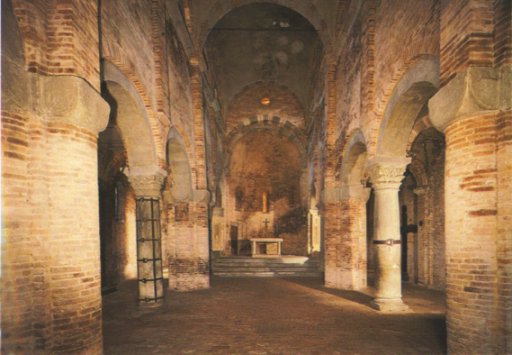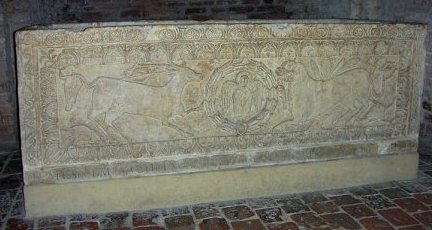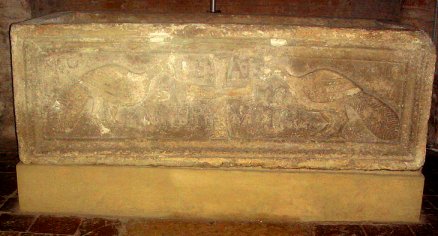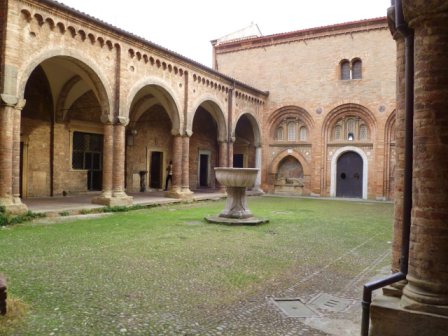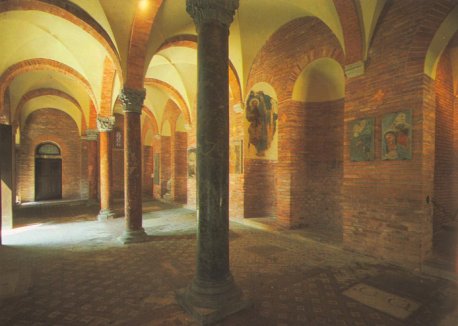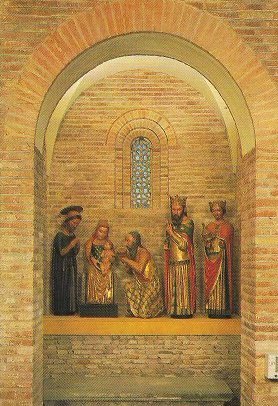|
Santo Stefano, Bologna |
|
| We have now arrived at the Church of Saints Vitale and Agricola, which is bare, undecorated, and with a powerful ambience. |
|
|
|
|
|
Vitalis and Agricola are said to be martyrs under Diocletian, tortured and martyred c 304. Legend tells us that the Roman amphitheatre was on this spot, and this is where they died. Agricola was a citizen of Bologna and Vitalis was his slave, converted to Christianity by his master. The church contains their sarcophagi. |
|
|
|
|
| Now head out to the Courtyard of Pilate. In the centre is a stone basin dating from the 8th century. Traditionally, it is the basin in which Pilate washed his hands, but it is unlikely that anyone has ever been truly convinced of this. To one side is the 14th century 'Rooster of St Peter' commemorating Peter's denial of Christ. |
|
|
|
|
| Facing the Church of the Holy Sepulchre is the Church of the Trinity, otherwise known as the Martyrium. Originally, an extension to the north replicated the Calvary: see the plan below. At that time this was the Church of the Crucifix, Santa Croce. This had now disappeared. | |
|
|
|
|
|
|
| The
church is much wider than it is deep, and has five niches along its
north wall containing works of art. The image of the Magi (above right)
is another work attributed to Simone dei Crocefissi. We're now going to leave Santo Stefano and head up a slight hill nearby. Click the link to find out why. |
|
